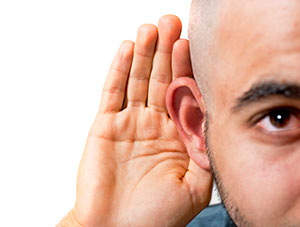Wave Fundamentals
RETIRED BETA VERSION - For current versions of the SciGen materials, please visit serpmedia.org/scigen
REFLECTING ON THE READER'S THEATER
Mechanical Waves (or "matter waves")
1. WATER
Leonardo da Vinci lived in the 1500s in Italy. He is famous for a number of inventions and works of art, including the Mona Lisa. Leonardo was a natural scientist and showed relentless curiosity for the natural world. Leonardo was aware of the difference between flow and wave motion in water. While watching circular ripples in a pond, he observed that water particles do not flow away from the disturbance that caused the ripples, but rather, they just move up and down as the energy is transmitted through the water. Leonardo tossed small pieces of straw onto the pond to make it easier for him to observe the movement of the water.
Carefully observe the two videos below of water. Think about throwing straw like Leonardo did on the surface (or something else that floats, like sawdust). What would happen? Do you think the effect would be the same? Different? How? Discuss with a partner.
Only one of the videos about is a good example of waves. Which one? Why?
Readers Theater Reflection 1
During the "line-up", Kenzo and the other surfers were waiting their turns in the water just bobbing up and down with their boards.
Why weren't the surfers getting pushed toward the shore by the waves? Why did Kenzo go in and out of the view of his friends watching from the shore?
2. SOUND
 When you hear a sound, what are you actually hearing? When you listen to music, have you ever thought about how your favorite song gets from the speakers to your ear? The speakers receive an electrical signal which vibrates a magnet at the base of the speaker. The speaker vibrates and compresses the air molecules around it. The compression of those air molecules creates a vibration, or sound wave, which then travels through the air to your ear. It’s like molecules bumping into each other all the way from the speaker to your ear!
When you hear a sound, what are you actually hearing? When you listen to music, have you ever thought about how your favorite song gets from the speakers to your ear? The speakers receive an electrical signal which vibrates a magnet at the base of the speaker. The speaker vibrates and compresses the air molecules around it. The compression of those air molecules creates a vibration, or sound wave, which then travels through the air to your ear. It’s like molecules bumping into each other all the way from the speaker to your ear!
The flaps on the ears serve a purpose. Their shape assists in catching energy from sound waves all around you. Try cupping your ears with your hands to see if you notice an increase the sound energy you are receiving. Your partner can help by talking to you while you test.
Readers Theater Reflection 2
Based on the description above of how sound waves work, why did it get harder for Journey to hear the others' voices when it got windy?
Electromagnetic Waves
Electromagnetic radiation is energy that is transmitted from a source of energy and can travel through a vacuum (empty space). This energy travels in waves, but contains all different types of frequencies. Some familiar frequencies include: radio waves, microwaves, and visible light.
1. Visible Light
Everything we see is light...or the absence of light. When we see an object that is red, for example an bright red apple, the apple’s skin is absorbing all the colors of the visible light spectrum, except red. The red frequency is not absorbed by the apple’s skin, so it reflects off the surface of the apple and back to our eyes!
Readers Theater Reflection 3
Think back to the readers theater story. Shani told her friends on the beach to look for Kenzo’s green board shorts to help them locate him out on the water. Discuss with your partner why Kenzo’s shorts appear to be green. What color is reflected? What colors are absorbed?
2. Radio
Radio waves are part of the electromagnetic spectrum. They have the longest wavelengths of any electromagnetic wave and they are especially useful for communication. Radio waves are used for cell phone calls, WiFi, Bluetooth, and AM and FM radio broadcasts. When you want to make a phone call from a cell phone, the antenna in your cell phone connects to the closest cell tower or base station using radio waves. You have probably seen cell towers near your home or school. The cell tower assigns a specific radio wave frequencies to your phone, and these radio waves are used to transmit and receive your conversation or to send and receive data. Like all electromagnetic waves, radio waves do not need a medium to transmit energy.
Readers Theater Reflection 4
When Shani, Journey, Luisa, and Kenzo were at the beach, what were the two devices they mentioned that used radio waves?
© SERP 2017
This Science Generation unit is currently in development. If you have comments or corrections, SERP would love to hear from you! Thank you.